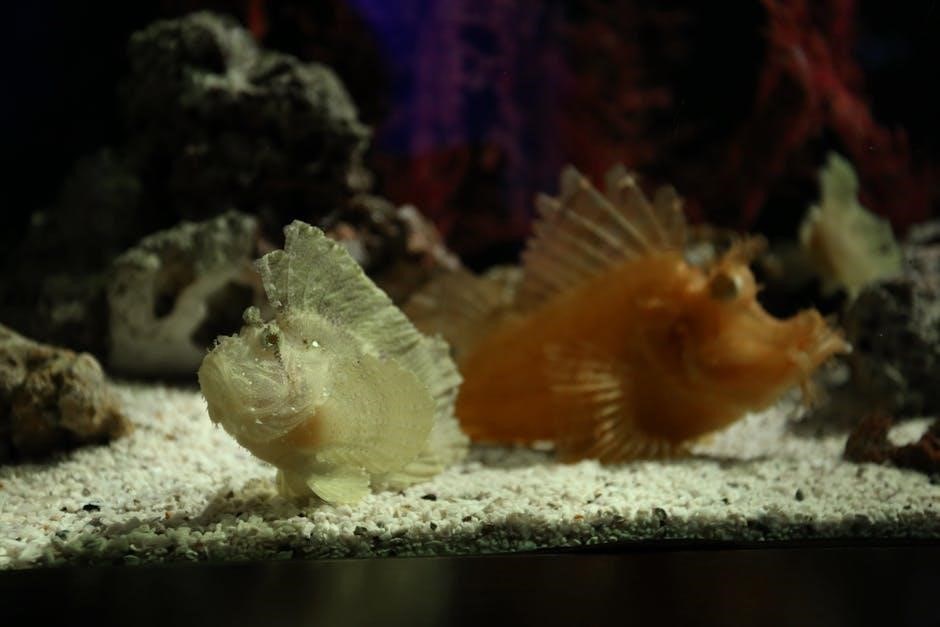Fish Cheeks, a short autobiographical essay by Amy Tan, was first published in 1987. It recounts a memorable Christmas Eve dinner, exploring cultural identity and self-acceptance.
1.1 Background and Publication
Fish Cheeks, a short autobiographical essay by Amy Tan, was first published in 1987. It predates her renowned novel The Joy Luck Club by two years. The essay recounts a personal experience from Tans adolescence, focusing on a Christmas Eve dinner that highlights cultural differences. Originally featured in a collection of short works, it gained popularity for its relatable themes of identity and heritage. The essays concise narrative and emotional depth have made it a staple in educational curricula, offering insights into the immigrant experience and cultural assimilation in America.
1.2 Summary of Plot
Fish Cheeks by Amy Tan recounts a Christmas Eve dinner at the narrators home. At fourteen, Amy is smitten with Robert, the ministers son, who is white; Her Chinese family invites his family over, and Amy is embarrassed by their traditional meal, fearing judgment. As the evening unfolds, Amy’s mother serves her favorite dishes, including fish cheeks, symbolizing love and pride. Despite initial shame, Amy begins to appreciate her heritage, marking a turning point in her journey toward self-acceptance. The story captures the tension between cultural identity and adolescent desire to assimilate, resonating with themes of belonging and pride.

Major Themes
Fish Cheeks explores cultural identity, self-acceptance, and diversity, highlighting the challenges of embracing heritage while navigating societal expectations and personal belonging. Themes resonate deeply with adolescent struggles and cultural pride.

2.1 Cultural Identity
Cultural identity is central to Fish Cheeks, as Amy Tan portrays her adolescent struggle to reconcile her Chinese heritage with American influences. The story captures her internal conflict, feeling ashamed of her family’s traditions during a Christmas dinner with an American family. This tension reflects the broader experience of immigrants navigating cultural duality. Through vivid imagery and symbolic food, Tan illustrates the discomfort of cultural differences and the eventual realization that embracing one’s roots is vital for self-acceptance. The narrative serves as a powerful exploration of identity, resonating with many who experience cultural clashes in their lives.
2.2 Self-Acceptance
Fish Cheeks delves into the theme of self-acceptance, highlighting Amy’s journey from embarrassment to pride in her cultural heritage. As a teenager, Amy feels humiliated by her family’s traditional Chinese customs during a Christmas dinner with an American family. Her crush, Robert, and his family’s presence intensify her desire to assimilate into American culture. However, her mother’s unwavering pride in their traditions sparks a turning point. The story underscores the importance of embracing one’s identity, showing how self-acceptance emerges from recognizing the value of cultural roots. This theme resonates universally, encouraging readers to find pride in their unique backgrounds.
2.3 Diversity and Belonging
Fish Cheeks explores the tension between cultural differences and the desire to belong. During the Christmas dinner, Amy feels embarrassed by her family’s traditional Chinese customs, fearing judgment from Robert and his family. The story highlights the clash between Chinese and American cultures, with Amy struggling to reconcile her dual identity. Her mother’s pride in their heritage contrasts with Amy’s wish to assimilate. The narrative ultimately suggests that true belonging comes from embracing diversity rather than hiding it. Through this, Tan emphasizes the importance of celebrating cultural differences and finding strength in one’s unique background.

Literary Devices
Amy Tan employs vivid imagery and simile to convey emotions, creating a rich narrative texture. These devices highlight cultural contrasts and amplify the protagonist’s internal conflict, enhancing the story’s emotional depth.
3.1 Imagery and Simile
Amy Tan uses imagery and simile to vividly depict cultural contrasts and emotions. For instance, she describes her crush as “white as Mary in the manger,” emphasizing his Americanness. The dinner scene is rich with sensory details, like the “bulging” fish eyes, which symbolize her embarrassment. These literary devices create a vivid narrative, drawing readers into her adolescent struggle with identity. By comparing her mother’s cooking to “the art of Chinese bargaining,” Tan highlights the cultural divide. Such techniques evoke empathy, illustrating her internal conflict between pride and shame in her heritage;
3.2 Symbolism in Food
Food in Fish Cheeks serves as a powerful symbol of cultural identity and love. The traditional Chinese dishes Amy’s mother prepares represent her heritage and affection. The fish, with its bulging eyes, symbolizes Amy’s discomfort with her cultural differences. The contrast between the Chinese feast and the American guests’ expectations highlights the clash of cultures. Food becomes a bridge, showing how Amy’s mother tries to connect her daughter to their roots. Through these culinary symbols, Tan conveys the complexity of embracing one’s identity and the universal language of love expressed through food.

Character Analysis
Amy Tan, the protagonist, is a teenager grappling with cultural identity and self-acceptance. Her mother, though traditional, embodies unwavering love and pride in their heritage, guiding Amy’s journey.
4.1 Amy Tan (Protagonist)
Amy Tan, the 14-year-old protagonist, embodies the struggle of cultural identity. She feels ashamed of her Chinese heritage, yearning to assimilate into American culture. Her crush on Robert, a white boy, intensifies her embarrassment, especially during the traditional Chinese Christmas dinner. Through her narrative, Tan captures the adolescent tension between fitting in and embracing one’s roots. Her internal conflict reflects the universal challenge of self-acceptance, as she learns to value her cultural identity and understand her mother’s unwavering pride in their heritage. This journey marks a pivotal moment in her growth toward cultural reconciliation and self-love.
4.2 Amy’s Mother
Amy’s mother is a symbol of cultural pride and unconditional love. She prepares Amy’s favorite dishes for Christmas dinner, showcasing her deep affection. Despite Amy’s embarrassment, her mother remains oblivious, embodying the strength of cultural heritage. She represents tradition and resilience, contrasting Amy’s desire to assimilate. Through her actions, Amy’s mother teaches the importance of embracing one’s roots, offering a lesson in self-acceptance. Her presence highlights the generational gap and the enduring power of familial love and cultural identity, ultimately influencing Amy’s journey toward self-understanding and pride in her heritage.

Cultural Significance
Fish Cheeks highlights the importance of cultural heritage and acceptance, using food as a bridge between traditions. It emphasizes embracing identity and celebrating diversity in a universal context.
5.1 Role of Food

In Fish Cheeks, food serves as a powerful symbol of cultural heritage and love. Amy’s mother prepares traditional dishes like fish cheeks, representing her devotion and pride in their Chinese roots. The elaborate feast contrasts with the American guests’ expectations, highlighting cultural differences. Through food, Tan illustrates the tension between embracing one’s heritage and assimilating into another culture. The dishes become a bridge, connecting generations and emphasizing the importance of preserving traditions. Food not only nourishes the body but also fosters understanding and appreciation of cultural identity, making it a central theme in the story’s exploration of belonging and pride.
5.2 Family and Community
Fish Cheeks highlights the significance of family and community in shaping cultural identity. Amy’s family gathers for Christmas, blending Chinese traditions with American customs. Her mother’s effort to prepare a feast reflects the warmth and unity of their household. The story emphasizes how family bonds strengthen cultural pride, even amidst external pressures. Through this portrayal, Tan illustrates the enduring influence of family and community in preserving heritage and fostering a sense of belonging. These relationships serve as a foundation for navigating cultural differences and embracing one’s identity with confidence and pride.

Key Quotes and Analysis
“I fell in love with the minister’s son” and “She had chosen all my favorite foods” are pivotal quotes. They highlight cultural conflict and maternal love, central to the story.
6.1 “I fell in love with the minister’s son…”
This quote introduces the central conflict of Amy’s crush on Robert, a white boy, and her subsequent embarrassment over her Chinese heritage. The line underscores her desire to assimilate into American culture, reflecting her internal struggle with identity. Amy’s feelings of shame are heightened during the Christmas dinner, where she fears judgment from Robert and his family. This quote encapsulates her adolescent longing for acceptance and her eventual realization of the importance of embracing her cultural roots. It serves as a poignant reminder of the challenges of navigating dual identities during adolescence.
6.2 “She had chosen all my favorite foods…”
This quote highlights Amy’s mother’s thoughtful preparation of the meal, showcasing her love and cultural pride. The food symbolizes the mother’s effort to connect with Amy’s heritage while also accommodating their American guests. However, Amy feels embarrassed by these traditional dishes, reflecting her internal conflict between her Chinese identity and her desire to fit into American culture. The quote underscores the tension between cultural heritage and personal identity, emphasizing the mother’s unconditional love and Amy’s struggle to embrace her roots. It serves as a powerful moment of realization for Amy about the value of her heritage.
Fish Cheeks remains a poignant reflection on cultural identity and self-acceptance, offering timeless lessons on embracing heritage. Its relevance in modern education and its enduring legacy underscore its impact.
7.1 Relevance in Modern Education

Fish Cheeks holds significant relevance in modern education as it addresses universal themes of cultural identity and self-acceptance. The story is widely taught in schools, particularly in diverse classrooms, to foster empathy and understanding among students from varied backgrounds. Its exploration of adolescent struggles resonates deeply, making it a powerful tool for discussions on identity, belonging, and cultural pride. By incorporating Fish Cheeks into curricula, educators help students navigate their own identities while fostering an inclusive environment that celebrates diversity and promotes cross-cultural understanding.
7.2 Legacy of the Story
Fish Cheeks has left a lasting impact as a poignant tale of cultural identity and self-acceptance. Amy Tan’s narrative resonates with readers of all ages, making it a timeless piece in American literature. Its legacy lies in its ability to bridge cultural gaps, offering a relatable voice for individuals navigating multicultural experiences. The story’s enduring popularity is evident in its continued inclusion in educational curricula and literary discussions, cementing its place as a cherished and influential work that continues to inspire reflection on heritage and belonging.

Leave a Reply
You must be logged in to post a comment.